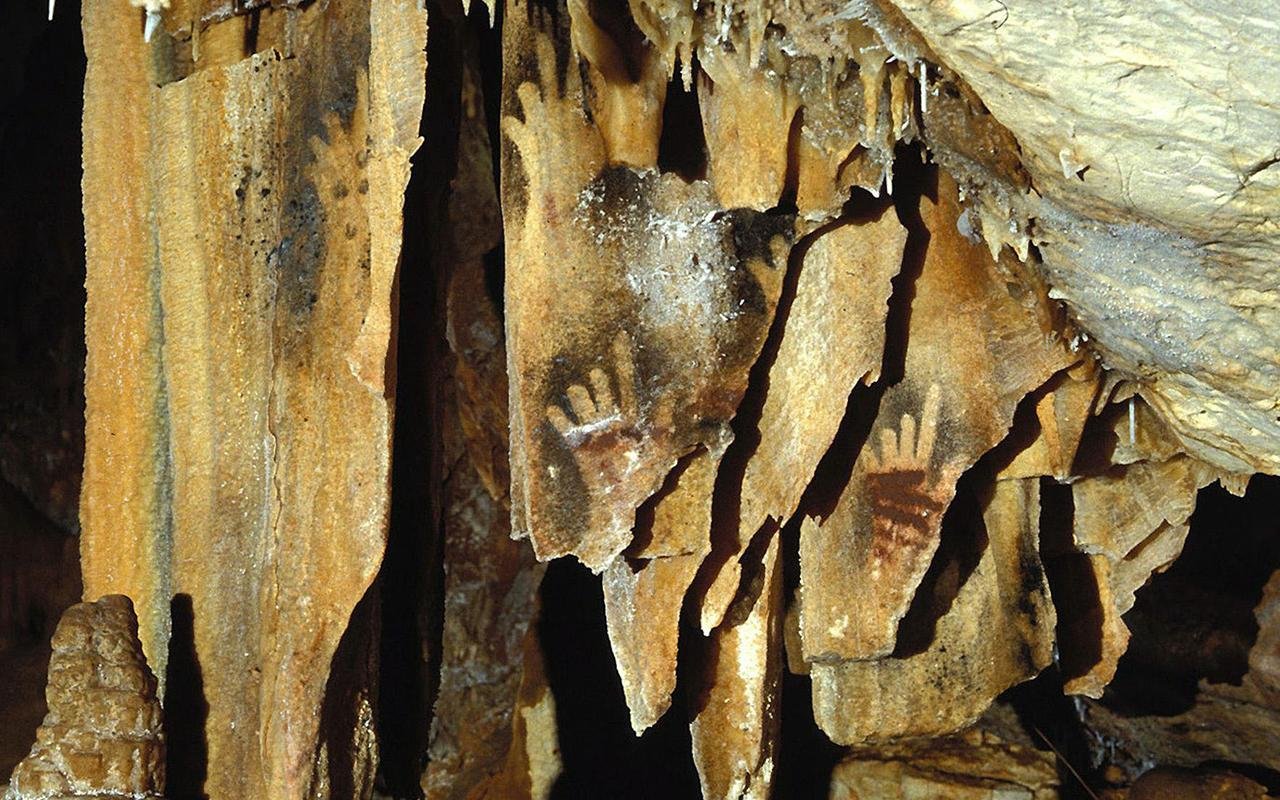A new interpretation of Paleolithic cave art suggests that prehistoric people engaged in deliberate finger amputation as part of religious rituals.

Researchers, led by archaeologist Professor Mark Collard from Simon Fraser University in Vancouver, presented their findings at a recent meeting of the European Society for Human Evolution, pointing to evidence from 25,000-year-old cave paintings in France and Spain.
The handprints found in these caves, over 200 in total, exhibit missing digits, challenging previous explanations attributing the absence of fingers to artistic expression or medical issues like frostbite.
Collard and his team propose a more unsettling explanation, suggesting that deliberate finger amputation may have occurred in rituals aimed at seeking assistance from supernatural entities. Collard told the Guardian: “There is compelling evidence that these people may have had their fingers amputated deliberately in rituals intended to elicit help from supernatural entities.”

The researchers argue that this practice was not unique to a specific time or location, citing contemporary examples such as the Dani people from the New Guinea Highlands, where women undergo finger amputation following the death of loved ones.
Collard emphasizes, “This is a practice that was not necessarily routine but has occurred at various times throughout history.” The team suggests that Europeans in paleolithic times may have engaged in similar rituals, albeit with different belief systems.
Collard and his colleague, PhD student Brea McCauley, first proposed the finger amputation thesis a few years ago but faced criticism from peers who argued that such amputations would be catastrophic for individuals in harsh prehistoric conditions.
However, the researchers have since gathered more data to support their thesis. Their latest research, presented at the European Society conference, provides even more convincing evidence linking the removal of digits to appease deities with hand images in caves across France and Spain.
The cave paintings, falling into two types – prints and stencils – display hands with missing digits at four main sites: Maltravieso and Fuente del Trucho caves in Spain, and Gargas and Cosquer caves in France. The global scope of the phenomenon is highlighted by Collard, stating, “This form of self-mutilation has been practiced by groups from all inhabited continents.” The researchers found over 100 instances of finger amputation in other societies across Africa, Australia, North America, south Asia, and southeast Asia.

The extensive research by Collard and McCauley also involved examining the motivations for finger amputation in various cultures worldwide. They concluded that the presentation of shortened fingers in Paleolithic hand images was likely evidence of religious sacrificial rituals or social survival rituals that strengthened group bonds and loyalty. Collard notes that rituals involving self-mutilation, such as finger amputation, have persisted in different forms throughout history, with examples like fire-walking and skin-piercing.
In response to criticism of their initial thesis, the researchers conducted further research, addressing concerns about the impact of amputations on individuals during the late Ice Age. They presented additional evidence at the European Society for the Study of Human Evolution meeting, reinforcing their claim that the intentional removal of fingers was more likely a result of ritualistic or social motivations.
Collard also drew attention to contemporary practices, such as the Dani population in Western New Guinea and Western Papua, Indonesia. He also highlighted the Yakuza, known for yubitsume, the amputation of the little finger as a display of atonement or punishment.


































